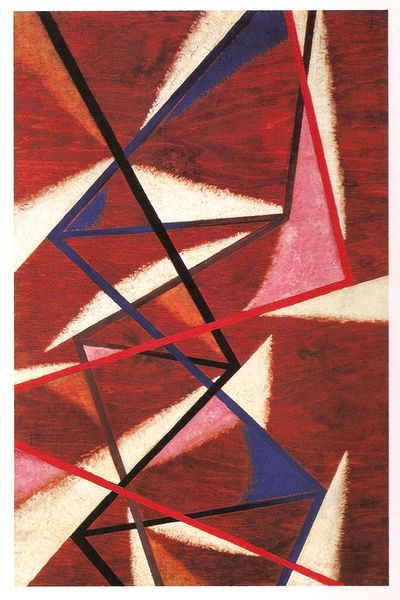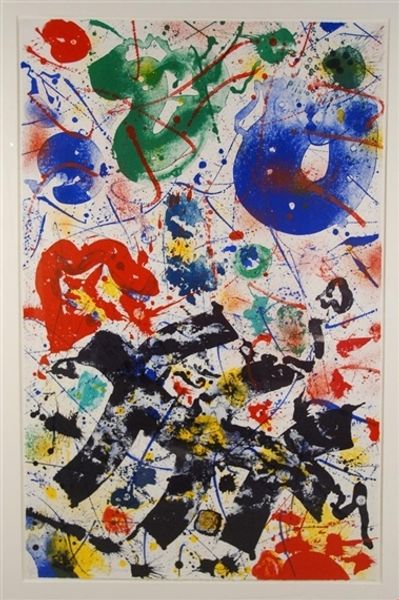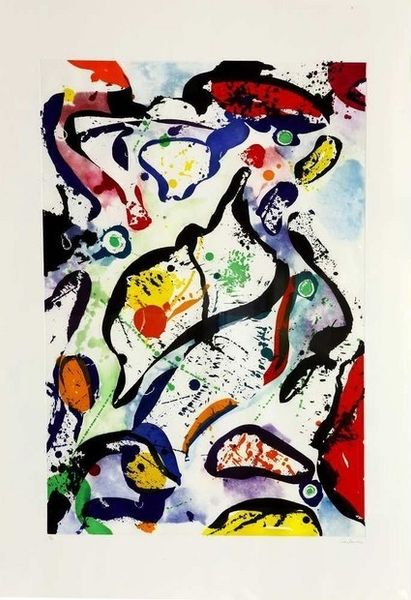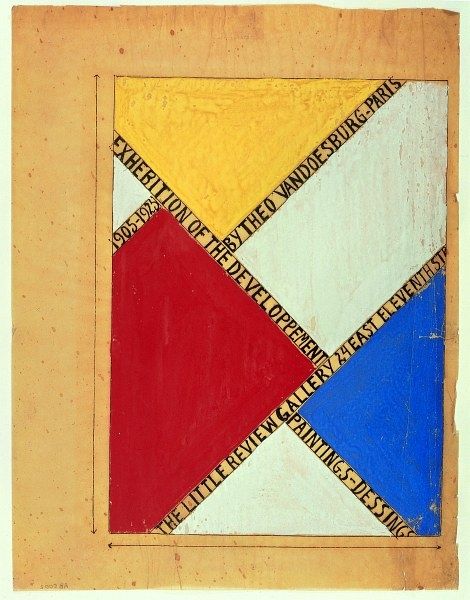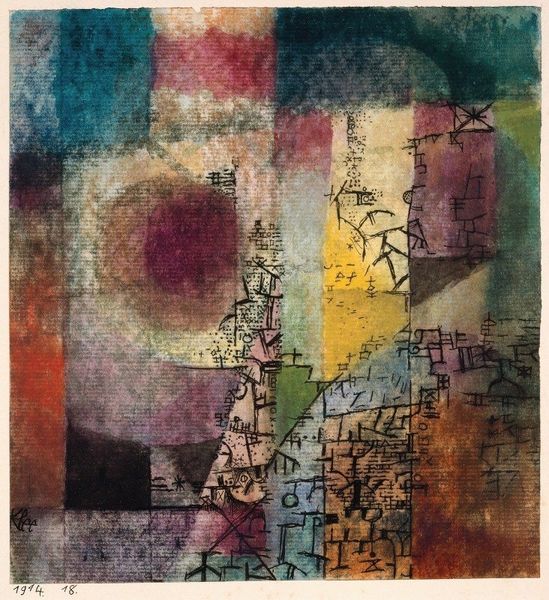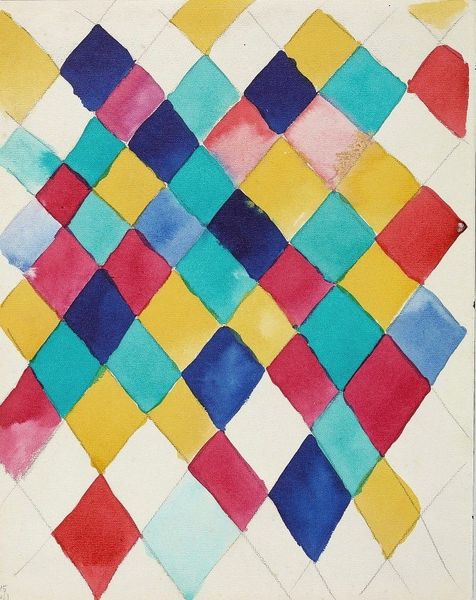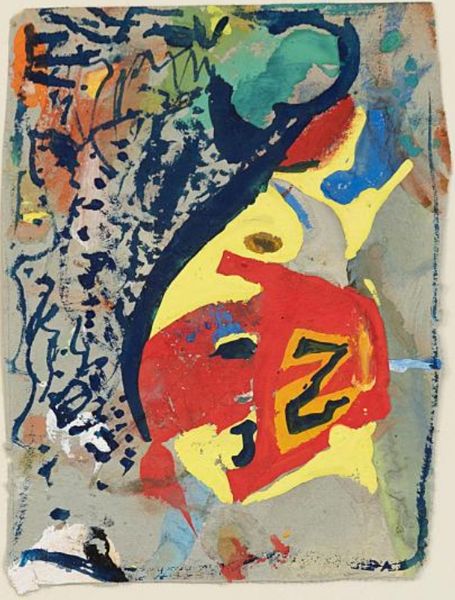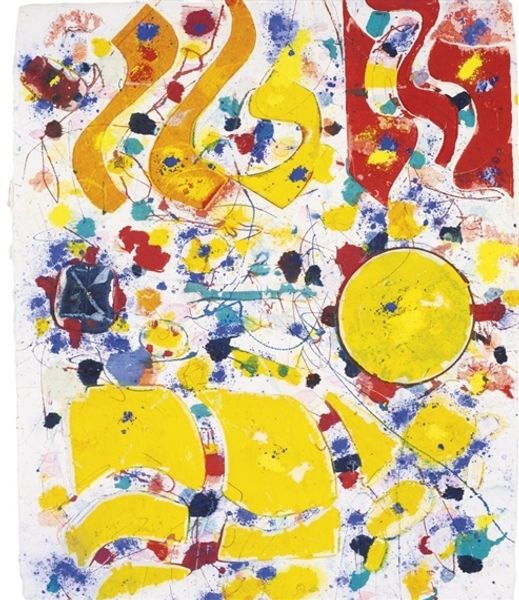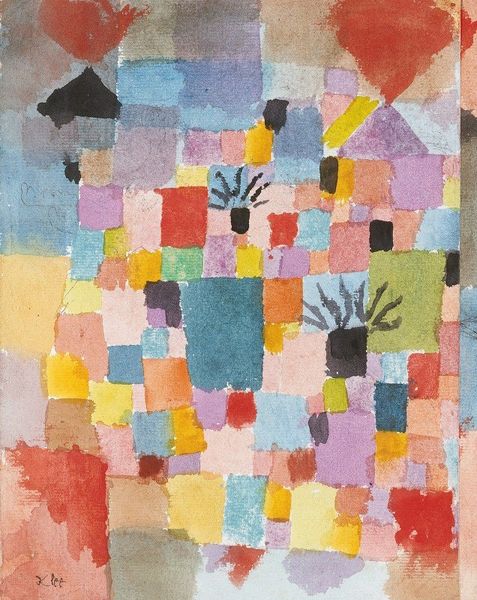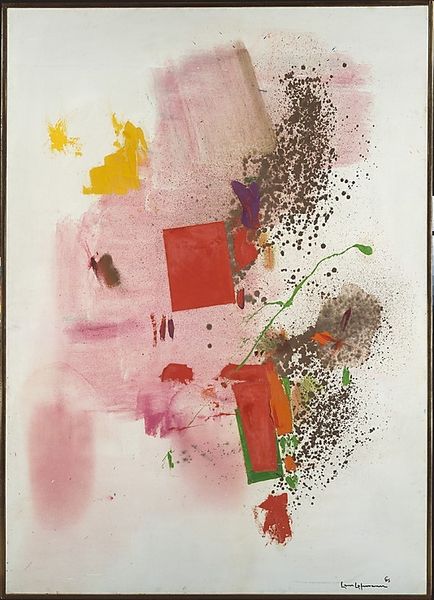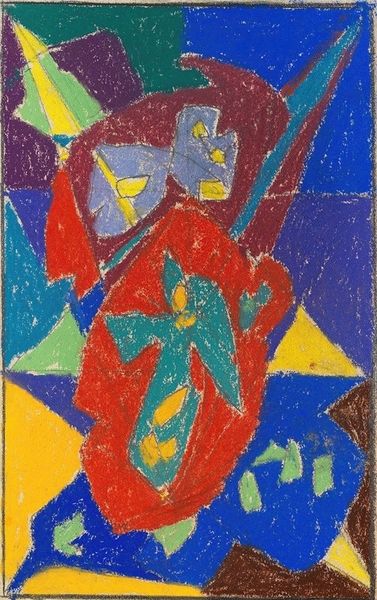
painting, watercolor
#
abstract painting
#
water colours
#
painting
#
abstract
#
watercolor
#
geometric
#
expressionism
#
modernism
Copyright: Public Domain: Artvee
Editor: Paul Klee’s “Gedenkblatt E,” created in 1924 using watercolors, has a childlike quality to it. I see shapes and figures floating in this space, yet they all appear fragmented, almost like shattered memories. What does this visual language suggest to you? Curator: Considering its historical context, this “Gedenkblatt,” or memorial sheet, offers an interesting lens. The early 1920s in Germany were marked by significant social and political instability. Could these fragmented shapes and childlike figures reflect a society grappling with a disrupted past, attempting to piece together a new reality from the ruins of the old? Editor: That’s an interesting point. Do you think the ambiguity in the imagery is a commentary on the uncertainty of that time? Curator: Precisely. Klee was associated with the Bauhaus, an institution striving to redefine art's role in society. He created art intended for all to understand and perhaps help create new traditions of how visual symbols would inform the future. We see recognizable shapes, but the symbols of sun and figures have childlike interpretations. Editor: It's fascinating how Klee uses abstraction to convey a sense of cultural disorientation, even while using universally relatable icons like figures and the sun. It pushes you to look beyond the surface for a deeper message about the psychological impact of history. Curator: And that act of "looking beyond," that engagement of the viewer, becomes an essential component of the artwork’s public function. Are we passive recipients of visual information, or are we active interpreters shaping our understanding of history? Editor: I hadn't considered how actively the viewer participates. I will be thinking about the purpose and responsibility of art museums today, now. Thank you. Curator: It's a thought-provoking piece, offering insights into both its historical moment and our own.
Comments
No comments
Be the first to comment and join the conversation on the ultimate creative platform.
